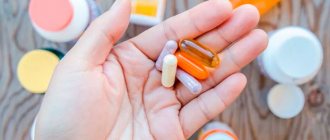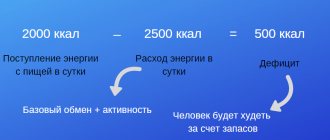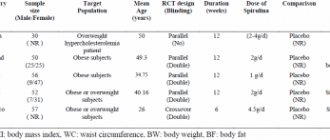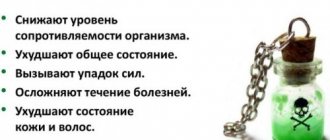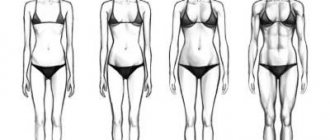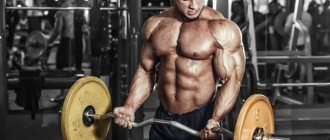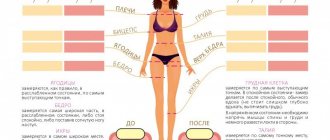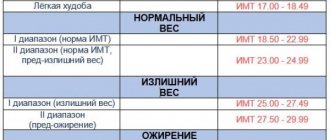Required standards
The content of the article
During monthly menstruation and during pregnancy, the female body loses iron, which means it is necessary to restore its normal level.
The required amount of iron per day is approximately 18 mg. However, in fact, only 10% of the required amount comes with regular nutrition. This is due to the fact that some products are not a source of the element, and some products completely block the absorption of iron.
The group of blockers includes:
- dairy products;
- Tea coffee;
- soybeans, corn, eggs.
Iron
Currently, people are increasingly experiencing problems with iron metabolism, and for this reason, diseases may arise. Iron enters the human body in 2 variants - divalent iron (Fe2+) and trivalent iron (Fe3+). Fe2+ is divalent iron or heme iron, found only in food of animal origin (for example, meat, liver), and is absorbed in the body almost completely. The majority of the daily diet consists of non-heme, or Fe3+, ferric iron, which is found primarily in foods of plant origin. A daily balanced diet contains 5-10 mg of iron, of which only 1-2 mg is absorbed. Once in the body, under the influence of hydrochloric acid in the gastric juice, iron is released from food. With stomach disease, the release of iron and its absorption in the body can be significantly reduced. Having been released from food in the stomach, iron then enters the duodenum and small intestine, where 90% of the incoming iron is absorbed.
In the human body, iron takes part in the formation of hemoglobin and thus participates in the transfer of oxygen to organs and tissues, normalizes the functioning of the thyroid gland, increases immunity: the body’s resistance to diseases, protects against the effects of toxic substances, participates in metabolic processes and hematopoiesis. The recommended daily requirement is 10 mg for men and 15-20 mg for women; for pregnant women, the daily requirement increases to 35 mg.
Daily dose of iron
, i.e. 10-20 mg, is found in: pig liver, sesame, wheat grain, legumes, nuts, spinach, meat, mainly beef. And there is a lot of iron in raspberries. The complete absorption of iron in the body is helped by vitamin C, which converts ferric iron into ferrous iron and promotes its absorption in the mucous membrane of the duodenum and small intestine. Therefore, it is necessary to add citrus fruits to your diet.
What are the causes and symptoms observed with iron deficiency in the body?
Iron deficiency can occur as a result of a number of reasons: - insufficient intake of iron into the body (for example, due to vegetarianism); - for diseases of the gastrointestinal tract, when its absorption in the mucous membrane of the duodenum and small intestine may be impaired; - with increased iron consumption (this condition can occur in women during menstruation); - Iron deficiency is also typical for pregnant women.
In such cases, a condition called iron deficiency anemia develops. In this case, a person experiences: weakness, decreased performance, dizziness and headaches, pale skin, drowsiness, cracks in the corners of the lips, brittle hair and nails, dry skin. If you experience these symptoms, we recommend that you consult a specialist. Because the doctor will not only prescribe a special diet rich in iron, but will also prescribe special iron-containing medications.
Prevention: -the daily diet should be complete and balanced; - include meat and liver in your diet, since these are the main suppliers of iron; -cereals and beans also contain large amounts of iron; — take vitamin C, which improves the absorption of iron from plant foods, therefore: include vegetables and fruits in your diet; - before meals, you should not drink coffee or tea, because it contains caffeine, and it, together with iron, forms insoluble complexes and is excreted through the kidneys.
Remember, timely consultation with a doctor is 90% of success!
Signs of iron deficiency
At the very beginning of iron deficiency, it is difficult to guess the problem - the symptoms are weak or absent. After some time, the situation becomes worse, it is noticeable that something is wrong with your health.
A number of symptoms appear:
- dizziness;
- bad feeling;
- lethargy;
- dryness and flaking of the skin;
- depletion of nails.
Due to a large iron deficiency, tinnitus may be bothersome.
In women, the condition of the hair usually immediately deteriorates and begins to fall out. If you feel that something is wrong, be sure to go to an appointment with a gynecologist, or even better, get checked regularly so as not to trigger the problem.
Possible health benefits associated with iron intake:
- Healthy Pregnancy: Low iron intake for a woman increases the risk of preterm birth, low birth weight and anemia in the baby at birth. — Iron takes part in the functioning of the thyroid gland, cellular and local immunity is preserved provided there is a sufficient amount of iron in the body.
— Iron helps remove toxins from the body, participates in regeneration processes, improves skin condition, hair and nail structure.
— Iron is necessary for athletes, since iron deficiency weakens the immune system and reduces labor productivity.
Iron-rich foods : red meat, grains, liver, shellfish, dark chocolate, white beans, lentils, blueberries, ground beef, oysters. Dangerous foods for iron absorption are all dairy products and those containing large amounts of calcium, as well as coffee and tea.
How to replenish iron deficiency
To restore your iron norm, you need to understand why you lack it. Therefore, first you should seek help from a doctor and find out the reason. If a woman is over 50 years old, then this is especially important, since during this period hormonal changes in the body occur with the loss of a significant amount of micro- and macroelements.
It is also important to be tested for anemia during pregnancy. Pregnant women retain more iron than other women, but the need for it is much greater.
You cannot make decisions about taking iron supplements on your own. Such medications are purchased only as prescribed by a doctor.
In addition to taking medications, you need to eat right. A balanced diet is one of the main elements for your health. To avoid problems with iron deficiency, you should not neglect foods that contain it.
What foods provide the body with the daily requirement of iron?
Articles
Iron is one of the most important components that are necessary for the stable functioning of the human body. Replenishment of iron in the body is achieved through the consumption of certain foods, as well as the use of additional vitamin complexes. According to current data, the average daily requirement of the adult human body is:
- 10 mg – for men;
- 10-15 mg – for women;
- 18 mg – for nursing mothers and pregnant women.
The optimal daily dose allows a person to feel good, maintain the usual level of activity and, of course, maintain the ability to work. Low levels of iron in the body provoke the development of pathologically dangerous processes.
The key symptoms of a lack of iron levels in the body are neurological. These include prolonged depressive states, a chronic feeling of fatigue, as well as, the opposite, short temper and rapid heartbeat (tachycardia).
In addition, there are external signs that may indicate anemia (lack of iron, low hemoglobin levels). These include:
- increased fragility of nails and hair;
- frequent stomatitis and other lesions of the oral cavity;
- pale skin;
- weakness of the muscular frame.
Foods that contain iron
Iron is a unique nutritional component found in a large number of food products, both plant and animal origin. Iron from food of animal origin is considered to be most beneficial for the human body (easier to digest). When combining foods, the digestion and absorption of iron improves somewhat.
The most iron is found in the following foods:
- Pork and beef liver (19-20 mg per 100 g of product)
It is important to consider that the best preservation of beneficial substances is observed in a lightly fried product (not stewed), which provides optimal conditions for preserving maximum benefits.
- Dried porcini mushrooms (35 mg per 100 g of product)
Not everyone can eat as much as 100 grams of dried mushrooms. For this reason, it is best to prepare mushroom soup from them or make a delicious sour cream-based sauce.
- Sea kale (16 mg per 100 g)
Just one serving of seaweed salad contains a huge amount of useful substances (not only iron, but also iodine, phosphorus, etc.).
- Wheat bran and brewer's yeast (19-20 mg per 100 g of product)
The products are really very useful. But not everyone can have this.
- Cocoa (16-18 mg per 100 g of product)
To ensure maximum absorption of iron, it is recommended to prepare a concentrated drink with milk. It is important to follow a special cooking technology: do not boil for too long, which will preserve useful microelements.
Interesting fact: 26 fresh green apples is the daily requirement of iron for a healthy adult. It is better to give preference to those fruits that have not been subjected to any additional processing.
Food products that are familiar to everyone, which are contained in the diet of the overwhelming majority of the domestic population (potatoes, various cereals, poultry, etc.), as a rule, contain a relatively small amount of iron (up to 10 mg per 100 g). For this reason, it is quite difficult to get the required dose of iron from food.
What to do in such a situation?
We tell you the simplest way to increase iron levels in the body
Do you want the level of iron in your body to be optimal? Are you tired of fighting anemia and have tried a large number of ways to increase hemoglobin? We’ll tell you another, effective one – using the “ORIHIRO” Iron complex with plum flavor.
Iron "ORIHIRO" with plum flavor is a unique complex that allows you to saturate the body with a daily dose of iron, taking only two tablets per day. It is important that this is not just a food supplement, but precisely the iron that is most easily absorbed and is so necessary for our health.
Use the ORIHIRO vitamin complex and forget about worries about annoying anemia, loss of strength and loss of performance.
Diseases and conditions causing iron deficiency
The main factors influencing iron deficiency in the female body:
- uterine bleeding;
- stomach diseases;
- renal failure;
- tumor in the digestive system;
- fasting on various diets;
- vegetarianism;
- menopause, which causes a slowdown in metabolic processes.
Of course, it will be difficult to restore your normal level with the help of products alone. But you can’t start taking something without examination. First, go to the doctor, take all the necessary tests for hemoglobin, and only after that, the gynecologist should prescribe you something that suits your body.
YOU NEED AS MUCH IRON AS YOU NEED
The hemoglobin molecule consists of four subunits (colored in different colors in the figure). Each of the subunits has an iron-containing group - heme (highlighted in red).
Air composition in the respiratory tract (volume percentage).
The amount of iron in basic iron-containing foods
The circulation of oxygen and carbon dioxide in the systemic and pulmonary circulation.
Iron metabolism in the body.
‹
›
As Mephistopheles said, “blood is a special kind of juice.” Of all the body fluids, it is the blood that provides a person with oxygen (O2), vital for the production of energy of all types, and removes the main toxic metabolic product - carbon dioxide (CO2). Transportation of these gases occurs with the direct participation of iron atoms.
A healthy person’s body constantly contains 4-5 grams of iron. Approximately 70% of this amount is required to saturate the hemoglobin packed in red blood cells, 5-10% of iron comes from myoglobin, which is involved in the transfer of oxygen and carbon dioxide in the muscles, 20-25% is in reserve, mainly in the liver. About 0.1% of total iron is bound to the protein transferrin in the blood plasma.
Our body is completely penetrated by the smallest vessels - capillaries. Many of them are so thin that the red blood cells have to turn from a ball into a thin rod in order to squeeze inside. Despite the long and difficult path, some of the red blood cells spend less than 30 seconds traveling through the systemic circulation, from the left ventricle to the right atrium, and during this time they must have time to give oxygen to the tissues. Red blood cells pass through the capillaries of the lungs in just 10 seconds, managing to release the CO2 they captured in the tissues of the body and replace it with a new portion of O2.
An erythrocyte could not have acquired such turnover if not for hemoglobin. The globin protein that forms its basis has the shape of a ball consisting of four subunits - polypeptide chains folded into pockets. An iron-containing complex, heme, is “embedded” in each of the pockets. As soon as one O2 molecule penetrates the pocket and connects with iron, the remaining globin chains begin to turn out sequentially in such a way that the second, third and fourth iron atoms “stick out” out. Here, iron instantly binds with oxygen, which is almost as much in the lungs as in the surrounding air, that is, relatively much. Thanks to the rearrangement of the globin molecule, a so-called cooperative effect occurs: the binding of the first globin subunit to oxygen increases the affinity of the other subunit for it, the binding of the second increases the affinity of the third, and so on. With each step, the addition of O2 to the hemoglobin iron becomes easier. The fourth iron atom thus acquires 500 times greater affinity for oxygen than the first. This mechanism was established by British biochemist and Nobel Prize winner Max Perutz in the 60s of the last century.
So, hemoglobin is saturated with oxygen without entering into a strong chemical bond with it, and is 100% converted into oxyhemoglobin of a bright scarlet color, which is typical for arterial blood. In capillaries, where the O2 concentration is lower than in the arteries, the stability of oxyhemoglobin decreases. The Danish physiologist Christian Bohr, the father of the famous Niels Bohr, found that not only a higher concentration of carbon dioxide displaces oxygen from hemoglobin, but also the binding of each CO2 molecule to an iron atom reduces the affinity of neighboring atoms for O2, that is, there is a struggle between two cooperative systems. As a result, hemoglobin very quickly gives all the oxygen to the tissues and is saturated with carbon dioxide, changing its color to a darker one - the color of venous blood.
*
Hemoglobin is synthesized in the same place where young red blood cells are born - in the bone marrow. There are 400 million hemoglobin molecules in one red blood cell, and every second the bone marrow gives birth to 2.5 million red blood cells! Nevertheless, 70% of the body’s total iron, that is, approximately 3 grams, is enough to saturate the blood with hemoglobin at the rate of 160 g/l.
The life of a red blood cell is short - only 125 days. In the “graveyard” of red blood cells, in the spleen, hemoglobin disintegrates and needs to be built anew. What about iron? If it were irretrievably lost, then the body would only have to renew all iron reserves in the blood every 125 days to build new red blood cells. About 25 mg would be required every day, and given that iron is not completely absorbed, even more. Fortunately, iron from destroyed red blood cells largely returns to the site of synthesis, and therefore the daily requirement of a healthy person for iron does not exceed 15 mg. This amount is entirely covered by food. A healthy person does not need to “ironize” food, just as we add salt to it. Despite such favorable conditions, sometimes iron is still not enough. Iron deficiency anemia develops, or in medical terms - iron deficiency anemia, which accounts for 80% of all anemias.
This disease has been studied for a long time. From the 6th to the 16th centuries, that is, almost the entire Middle Ages, anemia was considered especially characteristic of young girls and was called “pale illness.” With the development of medicinal chemistry, its cause was identified - a lack of iron in the blood, and the disease was called "chlorosis", from the Greek word meaning pale green. Both names well emphasize an outwardly noticeable symptom of the disease.
Currently, the disease is called iron deficiency or hypochromic anemia. Not the most important, but the simplest cause of this disease is a lack of iron in food. This happens, for example, with a vegetarian diet (intentional or forced), since of the total amount of iron contained in meat, 20% is absorbed, in fish - 10%, and in plant products - no more than 2-6%. There is practically no iron in milk and cottage cheese.
For some reason, everyone puts apples in first place in terms of iron content. Apparently, because the flesh of a cut apple in the air, oxidizing, turns brown, acquiring the color of rust. The merits of apples should not be diminished, but they cannot claim first place, especially since the iron content in them depends on the variety. More significant sources of iron are beef liver and beef, legumes, buckwheat, and rye bread.
Successful absorption of iron requires ascorbic acid and B vitamins - B3, B6, B12, Bc (folic acid). A lack of protein in the diet, as well as excess fat and milk, reduces the absorption of iron.
Among the internal (endogenous) causes of iron deficiency anemia, one should mention such a completely common condition as increased growth. In full-term infants it occurs at the age of two to three months, and in premature infants even earlier. Infantile anemia at four to six months of age is associated with rapid growth accompanied by depletion of iron stores in the liver and bone marrow. In children in the first year of life, it is aggravated by iron deficiency in mother's milk and prolonged milk feeding. An increased need for iron appears in young girls due to increased growth, the onset of physiological blood loss, the inhibitory effect of estrogens on iron consumption, and even if they limit themselves in nutrition in order to lose weight. In mature women, anemia can occur during pregnancy and breastfeeding.
Another common cause of iron deficiency anemia is illness. Chronic inflammation of the intestines, especially the duodenum, prevents the effective absorption of iron. It is also poorly absorbed when the acidity of gastric juice is low. Slow but steady loss of iron is caused by bleeding ulcers of the stomach and intestines, as well as heavy menstruation (most often associated with diseases of the uterus).
Lack of iron leads to a decrease in hemoglobin levels in the blood. And what colors your cheeks with a bright blush? What gives strength to the heart and muscles? What ensures the intense work of thought? Scarlet arterial, oxygenated blood. Iron deficiency anemia is a fairly common disease. Taking into account the asymptomatic forms, more than 30% of the population suffers from it, mainly women of mature age. When iron deficiency occurs, a person does not feel it at first. The symptoms of the disease are not very typical. With anemia, patients are pale, lethargic, and indifferent to everything. Perversion of taste and smell and impaired nail growth are noted.
Chronic lack of oxygen supply to internal organs causes dysfunction of the liver, heart muscle, atrophy of the intestinal mucosa, and changes in the electroencephalogram. Atrophy of the esophageal mucosa can lead to difficulty swallowing dry food. These symptoms often occur before the manifestation of overt anemia, during the so-called latent period.
Have you perhaps noticed that some people enjoy eating chalk or lime? Actually, this is not entirely normal. But don’t think that the craving for chalk is necessarily caused by a lack of calcium, although this is most often the case. A similar addiction is found in those who suffer from iron deficiency. These same people have a love for the smell of kerosene or car exhaust.
*
Let's consider a specific example of treatment with iron supplements after blood loss. Let's say that as a result of injury a person lost a liter of blood, and with it almost a gram of iron. A certain amount of it was replenished from reserves stored in the liver. However, there is still a deficit of approximately 0.5 g. New portions of red blood cells will leave the bone marrow and enter the blood underloaded. Since iron is contained not only in hemoglobin, but also in other proteins, in particular in some enzymes, in fact, to compensate for the deficiency and create reserves, approximately twice as much iron is required, for good measure - 1 g. And a gram of iron is approximately one nail! Yes, but how to “drive” it into the bone marrow?
There is no use in swallowing iron filings; they pass through the intestines in transit and are not absorbed. It is possible to obtain very fine iron powder by reducing its oxide in a stream of hydrogen. But only 0.8% of the administered amount is absorbed from this powder, that is, in order for the required gram to enter the blood, you need to eat 125 g of powdered iron! An upset stomach is guaranteed. But there will be a disorder, and 1 g will not be absorbed.
Therefore, iron is used in the form of salts or complexes, which are better absorbed. Nowadays lactate, sulfate, fumarate, ferric chloride, as well as complexes of iron salts with ascorbic acid, folic acid and other vitamins are used. In recent years, evidence has emerged indicating that when treating hypochromic anemia with iron preparations, it is necessary to prescribe vitamin E (alpha-tocopherol) to increase the effectiveness of therapy and to reduce the pro-oxidant effect inherent in iron ions. The intake of iron into the body can be extended over time by taking slow-acting medications.
If you need to increase the iron content in the body urgently or if for some reason it is impossible to take it orally, drugs for intravenous administration are used, but this is the concern of doctors. The criterion for the effectiveness of treatment is an increase in hemoglobin by 0.15-0.3 g/l per day. In the first days the effect is higher, but gradually decreases. Since the daily increase may not be noticed, and treatment requires a long time, the tests are repeated no more than once every two weeks. An increase in hemoglobin content over this period by 2% is considered satisfactory. Unfortunately, there are forms of the disease in which iron, introduced into the stomach and then released into the blood, is not absorbed. Such patients are given red blood cell transfusions if necessary.
They began to treat chlorosis with iron preparations a very long time ago, in the 17th century, but the reason for the action of the medicine was not understood. Even in the pharmacology textbook of the 1917 edition, Fr. As you can see, medicine has made tremendous strides since then.
*
We have figured out, and only partially, the disease in which there is little iron in the body. But there can be too much of it!
The body usually has a relatively constant supply of iron in the form of water-soluble ferritin and insoluble hemosiderin. The first serves as a temporary storage of iron reserves, the second is a form of deposition of excess in tissues. A constant level of iron is maintained by regulating absorption, but not excretion. Iron supplied with food is first deposited in the intestinal mucosa. When needed, it is transported by the transport protein transferrin to the bone marrow and liver. If the iron depot is full and there is enough of it in the blood, then the iron remains in the intestinal cells, which are replaced with new ones every three to four days, and the excess iron is removed along with the desquamated epithelium. 1-2 mg of iron is excreted from the body per day (if there is no blood loss).
There is a hereditary disease - hemochromatosis (pigmentary cirrhosis, bronze diabetes), the cause of which is the loss of the intestines' ability to regulate the supply of iron as needed. As a result, all iron available from food enters the blood. The disease manifests itself not only in the color of the skin, but also in the massive deposition of iron in the organs, especially in the liver. The famous geneticist I.V. Davydovsky called this disease “degenerative rusting.” Mostly men suffer from hemochromatosis. The first symptoms are pain in the right hypochondrium, an increase in hemoglobin to 130-170 g/l, and a decrease in the number of red blood cells. In the body of some patients, a 100-fold amount of iron manages to accumulate.
Hemochromatosis is a serious disease, but not hopeless. There are now drugs that capture iron and convert it into a soluble state, thereby facilitating excretion in the urine.
Another disease associated with excess iron in the blood is hemosiderosis. It is quite rare and occurs with massive destruction of red blood cells. Hemosiderosis can be caused by frequent blood transfusions, poisoning (in particular, mushrooms), snake bites, and some infectious diseases, such as malaria.
In addition, increased iron content in the body can lead to the activation of pathogenic microbes and weakening of the immune system. In a word, a lack of iron is bad, an excess is also bad. In the human body, everything should be in moderation.
Illustration: “Composition of air in the respiratory tract (volume percentage).”
Air composition in the respiratory tract (volume percentage). Note. Exhaled air differs from alveolar air because it mixes with residual air remaining in the trachea and bronchi.
Illustration: “The circulation of oxygen and carbon dioxide in the systemic and pulmonary circulation.”
The circulation of oxygen and carbon dioxide in the systemic and pulmonary circulation. In the pulmonary circulation, carbon dioxide is displaced from hemoglobin and replaced with oxygen. In this case, the blood becomes scarlet in color. Through the systemic circulation, arterial blood, in which each hemoglobin molecule carries four oxygen molecules, enters the tissue capillaries. The tissues contain a lot of carbon dioxide and a moderate amount of oxygen. Therefore, as a result of replacing four O2 molecules in hemoglobin with four CO2 molecules, the blood acquires a dark color with a cherry tint (venous blood).
Illustration: “Iron metabolism in the body.”
Iron metabolism in the body. A balanced diet contains enough iron to meet the daily requirement, which averages 10-20 mg. 1-2 mg is usually absorbed in the intestine. Iron absorption increases if it is necessary to compensate for the resulting deficiency, for example, with physiological blood loss in women.
Excess iron in the body
Excess iron is not as common as iron deficiency and causes great harm to health.
A number of diseases can be complicated by excess iron:
- oncological processes are accelerated;
- iron deposition occurs in cells and organs;
- skin pigmentation increases;
- chronic diseases and pathologies develop.
To avoid such problems, you need to conduct a medical examination at least once every six months. With a healthy, active lifestyle and with properly prescribed medications, problems with iron deficiency or excess should not arise.
If you already have a problem, don’t delay going to the doctor, otherwise it will only get worse. First, you should contact a gynecologist who will examine, listen and prescribe the necessary tests. Based on the results of a blood test, the doctor will determine the level of hemoglobin, that is, an iron-containing blood protein of complex structure. A competent examination will help identify and eliminate the causes of the problem.
ONLINE REGISTRATION at the DIANA clinic
You can sign up by calling the toll-free phone number 8-800-707-15-60 or filling out the contact form. In this case, we will contact you ourselves.
If you find an error, please select a piece of text and press Ctrl+Enter
Products containing iron: not only tasty, but also healthy!
Iron deficiency in the blood can occur in people whose diet is unbalanced. How can you increase iron levels in your blood?
Taking some dietary supplements can provide an additional source of iron. Consequences of iron deficiency...
Iron is one of the elements vital to our body. Why does the body need iron?
Chronic iron deficiency can lead to a decrease in hemoglobin, a protein that carries oxygen, in the blood and provoke the development of anemia. Measures to prevent iron deficiency anemia...
Lack of iron in the blood can cause the development of iron deficiency anemia. How can you restore iron deficiency in the blood?
For women diagnosed with iron deficiency anemia, iron supplements may be recommended, among other medications. Prevention of anemia...
For full development, a child’s body needs a number of essential microelements, one of which is iron. Read more…
Lack of iron in the blood can occur in people experiencing severe physical activity. Read more…
“Ferrohematogen” is not a confectionery product, but a complete nutritional supplement created to maintain normal iron levels in the body. Find out the cost...
Dietary supplement Not a medicine.
A balanced diet is the key to health and well-being. But is it possible to create an ideal diet in which there is no shortage of vitamins and microelements? What place does iron occupy among them and why is it so important for us to have enough of it in the body?
Iron is one of the most important elements ensuring the normal functioning of the human body. The content of this element is directly related to the level of hemoglobin in the blood, and therefore to the transfer of oxygen to tissues. Iron is also part of many enzymes, supports the immune system, is involved in metabolism, is responsible for the process of hematopoiesis, and affects body growth.
This is interesting Iron is the most common metal in the earth's crust. The role of iron is great not only in the economic life of society, but also in the human body, while the body itself is not capable of producing iron; it receives it only from external sources.
Daily iron intake
If a person is healthy, then his body contains 3-4 mg of iron. Moreover, two-thirds is present in the blood and only one-third is found in the bones, liver and spleen. In the process of life, iron is consumed daily: through sweating, exfoliation of the skin, and in women also during menstrual blood loss. Therefore, iron reserves must be constantly replenished. This can be done with certain foods. Moreover, it is worth considering that each group of people needs its own amount of iron.
Daily iron requirement:
- women 10–30 mg;
- pregnant women - at least 30 mg;
- boys - 10 mg;
- girls - 15 mg.
If the iron supply is not replenished, the body lets you know: the condition of the hair, skin and nails becomes worse, you feel constant fatigue and lethargy.
An overdose of iron is also possible, for example, if you consume meat, cereals, and food additives containing iron at the same time and in large quantities, the element will begin to be deposited in the body and negatively affect the liver, kidneys, bladder, heart, blood vessels, and can provoke the appearance of sugar diabetes and rheumatoid arthritis. Women with the onset of menopause should monitor their iron intake and reconsider their diet, since with the disappearance of monthly blood loss, the iron content level decreases.
This is important Consuming 7 g of iron or more at one time can be fatal.
Who needs foods high in iron?
Some of us need more iron. You can compensate for this deficiency with the help of iron-containing products of both animal and plant origin. Who should eat more foods containing iron? These, as we have already noted, are pregnant women, since the blood volume in their body increases due to the enlargement of the uterus and the growth of the fetus. In order for the body to produce more blood, it needs twice as much iron. Also, during the postpartum period, the iron content in the body may be reduced.
Large amounts of iron are found in offal, meat, fish, and eggs. Vegetarians whose diet does not include these foods usually experience severe iron deficiency. Those who adhere to strict diets face the same problem. Iron levels also decrease after blood loss associated with injuries, heavy menstruation, and blood donation. The need for iron increases among athletes and people whose work involves heavy physical activity (porters, laborers, loaders, etc.): a large amount of iron is excreted from the body through the skin along with sweat.
The easiest way to find out the level of iron in the blood is a complete blood test. The hemoglobin level in this analysis allows you to indirectly estimate the iron content in the blood. Normal indicators for different sex and age groups differ significantly (see Table 1 and Table 2).
Table 1. Hemoglobin norms for men and women
| Floor | Age (years) | Hemoglobin norm (g/l) |
| Men | 16–18 | 117–166 |
| 19–45 | 132–173 | |
| 46–65 | 131–172 | |
| 66–90 | 126–174 | |
| Women | 15–18 | 117–153 |
| 19–45 | 117–155 | |
| 46–65 | 117–160 | |
| 66–90 | 117–161 | |
| In pregnant women, the hemoglobin norm is 110–155 g/l | ||
Table 2. Hemoglobin norms in infants and children
| Age | Hemoglobin norm (g/l) |
| First 3 days of life | 145–225 |
| 1 month | 115–175 |
| From 2 months to 1 year | 110–145 |
| From 1 year to 5 years | 110 and above |
| 5–11 years | 115 and above |
| 12–15 years | 120 and above |
To bring your hemoglobin level back to normal, you should consult your doctor, create the right diet and determine which medications should be used.
Important to know With a lack of iron, anemia begins to develop, or, in other words, anemia. Decreased concentration, fatigue, weakness - this is how anemia manifests itself at the initial stage. If measures are not taken in time, then even with little physical activity the patient will experience palpitations, shortness of breath, headache, and tinnitus. Plus, sleep disturbances, appetite disturbances, and decreased sex drive. Other pathologies are also possible. To control your hemoglobin level, it is only important to get tested on time and visit a doctor.
What foods are rich in iron?
Depending on what products iron comes into the body from, its type is determined:
- Heme iron is an element that comes into the body from animal products. Contained in meat, offal, poultry, fish. This type is absorbed most efficiently (from 15 to 35%). Remember: the darker the meat, the more iron it contains (see table 3).
Table 3. Amount of heme iron content in milligrams per 100 grams of product
| The product's name | Iron content (mg) |
| Pork liver | 20,2 |
| Chicken liver | 17, 5 |
| Beef | 3,6 |
| Mutton | 3,1 |
| Pork | 1,8 |
For better absorption of iron, these products should be consumed with vegetable side dishes.
- Non-heme iron is found in plant foods. The element is found in legumes, spinach, apples, cereals, nuts, and dried fruits. This type of iron is absorbed less efficiently by the body (from 2 to 20%).
Table 4. Plant foods with the highest iron content
| The product's name | Iron content (mg) |
| Lentils | 11,8 |
| Wheat bran | 11,1 |
| Soybeans | 9,7 |
| Buckwheat | 6,7 |
| Peanut | 4,6 |
Another way to replenish iron reserves is to use dietary supplements (BAS), monovitamins (as recommended by a doctor) and vitamin complexes.
Nutrition Basics for Iron Deficiency
For better absorption of iron from plant-based foods, they should be taken with foods rich in vitamin C. These are citrus fruits, greens, tomato juice, bell peppers, rose hips, and broccoli.
B vitamins contribute to better absorption of iron . They are found in mushrooms, cabbage, seaweed, carrots, melon, and leafy vegetables.
Folic acid also goes well with iron. It can be found in grain bread, corn, avocado, rice, oatmeal, barley and pearl barley.
Note: Cast iron cookware retains the beneficial element during heat treatment of meat, poultry and fish.
It is not recommended to simultaneously consume foods containing iron and calcium , as these two elements make it difficult to absorb each other. Therefore, buckwheat with milk, although a tasty dish, is by no means healthy. If you like dairy products, consume them separately from iron-containing ones - this way you will get more benefits from both.
Tannin prevents iron from being absorbed. Therefore, do not drink tea or coffee with iron-rich foods. It is better to use ordinary drinking water, tomato or some other vegetable juice, or dried fruit compote as a drink.
In an effort to increase the amount of iron, you should not exceed your normal diet - overeating will only lead to weight gain, and these are new problems for the body. Therefore, eat wisely: eat small meals 5 times a day, alternate eating foods containing heme iron with foods rich in non-heme iron. It is impossible to get an overdose from iron-containing products, but you should be careful with dietary supplements.
Thus, replenishing the lack of iron in the body is quite simple. This can be done with familiar and accessible food products. It is important to carefully monitor the compatibility of foods and eat food in small portions. If you follow these simple rules and lead a healthy lifestyle, then after a while you will feel a surge of strength and notice an improvement in the condition of your skin, nails, and hair.
Features of taking iron-containing dietary supplements
If the iron contained in food is not enough for the body and the level of hemoglobin in the blood is still low, your doctor may recommend that you take dietary supplements containing iron.
What are the requirements for such additives? We asked this question to a specialist: “In order for a dietary supplement to bring real benefits, it is important that it contains vitamins and microelements that promote the absorption and transport of iron. It does not matter fundamentally in what form you take dietary supplements, but it is more convenient and enjoyable if such supplements are made in the form of lozenges, bars or bars - children, for example, will be more willing to eat them, since the appearance of the form reminds children of familiar delicacies.
Our business card is “Ferrohematogen”. It contains whole condensed milk, sugar, starch syrup, black food albumin, vitamin C, vitamin B 6, iron and copper sulfates, folic acid, natural vanillin and glycerin. The product is manufactured in Kursk at our own full-cycle production facility. Chewable lozenges weighing 30 g, divided into 3 slices, and lozenges weighing 50 g, divided into 6 slices, in film-type packaging are well known to both adults and children.
But above all, the product is recommended for children. If a child is 3–11 years old, then his diet should include 30 g of “Children’s Ferrohematogen” daily, while children over 11 years old and adults can take 50 g per day. The duration of the course of taking Ferrohematogen is 1–2 months. However, you should consult your doctor before taking it; contraindications are possible.”
PS You can find out the latest information about the product on the website at the link www.ferrogematogen.ru.
The best tablets, capsules and dietary supplements to raise iron levels in the blood (iron supplements)
Iron is one of the most studied micronutrients, as are the consequences of its deficiency. Therefore, for a long time there have been quite a lot of different drugs and dietary supplements designed to compensate for its deficiency in the body in different cases.
Recent studies have shown that the optimal form of iron intake into the body is its pyrophosphate salt, which is absorbed 3.5 times more efficiently. These data were studied by the Ministry of Health and formed the basis for its recommendations for the correction of iron deficiency conditions. Therefore, today, when signs of iron deficiency are detected and this is confirmed by laboratory tests, patients are recommended to use preparations containing iron pyrophosphate.
Thanks to the use of such drugs, a gradual improvement in a person’s well-being is observed, which can be confirmed by repeated blood tests. Patients notice:
- increasing the overall tone of the body, vigor, reducing fatigue;
- improved mood and overall well-being;
- improved concentration, memory and increased speed of thinking;
- improving the condition of blood vessels, reducing cholesterol levels;
- improving the quality of weight control;
- strengthening the immune system and reducing the incidence of acute respiratory infections, as well as other infectious diseases;
- improvement of skin and nails condition;
- reduction of hair loss.
Let's look at the best and most popular iron supplements that have proven themselves in practice. But before you start using any of them, you should consult a doctor and donate blood for a general and biochemical analysis. This will allow you to determine the degree of iron deficiency and select not only the optimal drug, but also exactly the dose that is required for a given person.
Nan-O-Fer (Nanofer)
Nan-O-Fer is a Swiss dietary supplement in the form of capsules for oral use, created taking into account the characteristics of iron absorption in the body. Let us immediately outline several facts that, in our opinion, make it a priority among others. Nan-O-Fer contains liposomal iron (enclosed in a special microcapsule formed by bilayer phospholipids with a liquid medium). Today, scientists at Stanford University have proven that liposomes have independent antitumor properties; a new antitumor drug is being developed based on liposomes. In addition to iron, Nanofer contains vitamin B12, vitamin B6 and folic acid. Thanks to this combination, a normal level of iron is ensured to meet all the needs of the body, proper hematopoiesis, it becomes possible to increase vitality and improve the functioning of the nervous system, especially cognitive functions, i.e. memory, attention, thinking associated with iron deficiency. Nan-O-Fer is free of the usual side effects that can occur when taking almost any iron supplement - from constipation, staining of stool, to staining of enamel, metallic taste.
Official website of Nan-O-Fer representative in Russia: https://www.thymuskin.net/product/nan-o-fer/
Another important advantage of Nan-O-Fer is that it contains iron pyrophosphate, recommended by the Ministry of Health. This compound can be called “smart”, since the completeness of its absorption directly depends on the degree of iron deficiency in the body. Therefore, you can be sure that with a slight deficiency in the intestines, only a small part will be absorbed, and with a severe deficiency, a larger amount will be absorbed, and an excess of iron, which periodically occurs when replenishing its deficiency, will not occur.
It is taken very simply - 1 capsule per day, washed down with enough water. The course of treatment is 3-6 months. And finally, an important advantage of the product is its affordable cost.
Totema
Totema is a solution for oral use, available in 10 ml dark glass ampoules. It contains iron gluconate, manganese gluconate and copper gluconate. Thus, the drug helps replenish iron deficiency, and copper improves its absorption. At the same time, manganese helps improve metabolism, including improving the metabolism of blood cells.
To use the drug, the contents of the ampoule should be dissolved in a glass of water. The use of coffee, tea, milk or other drinks for this purpose is not permitted. The finished solution has a not very pleasant taste, to improve which you can add sugar to it.
Adults are advised to take 2-4 ampoules daily for 3-6 months. The disadvantage of the drug is the high price, as well as not the highest absorption of iron.
Maltofer
Maltofer is an iron preparation produced in the form of drops for oral administration, syrup and chewable tablets. The drug contains ferric iron in the form of polymaltose hydroxide. The dose and duration of use of the drug depends on the degree of iron deficiency in the body. As a rule, adults are recommended to take 1-3 tablets daily for 3-5 months. Drops and syrup are used to replenish iron deficiency in children from birth to 12 years.
